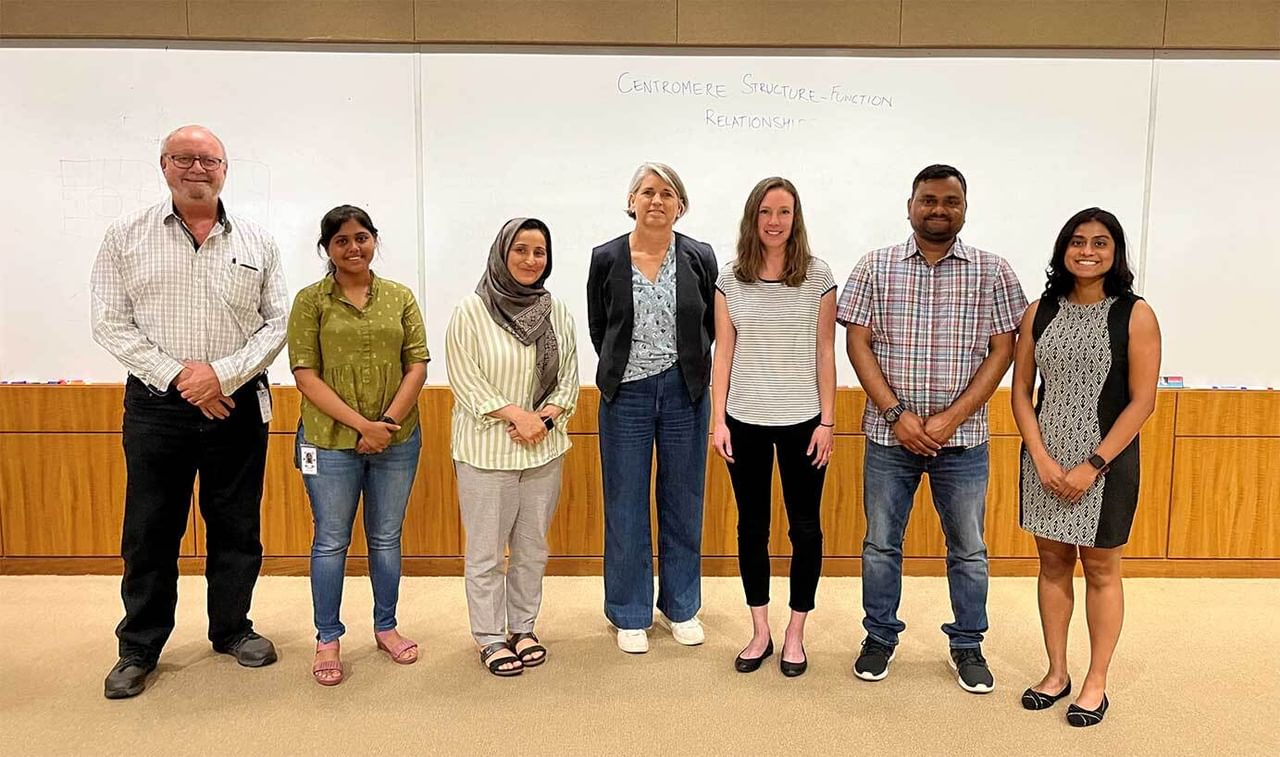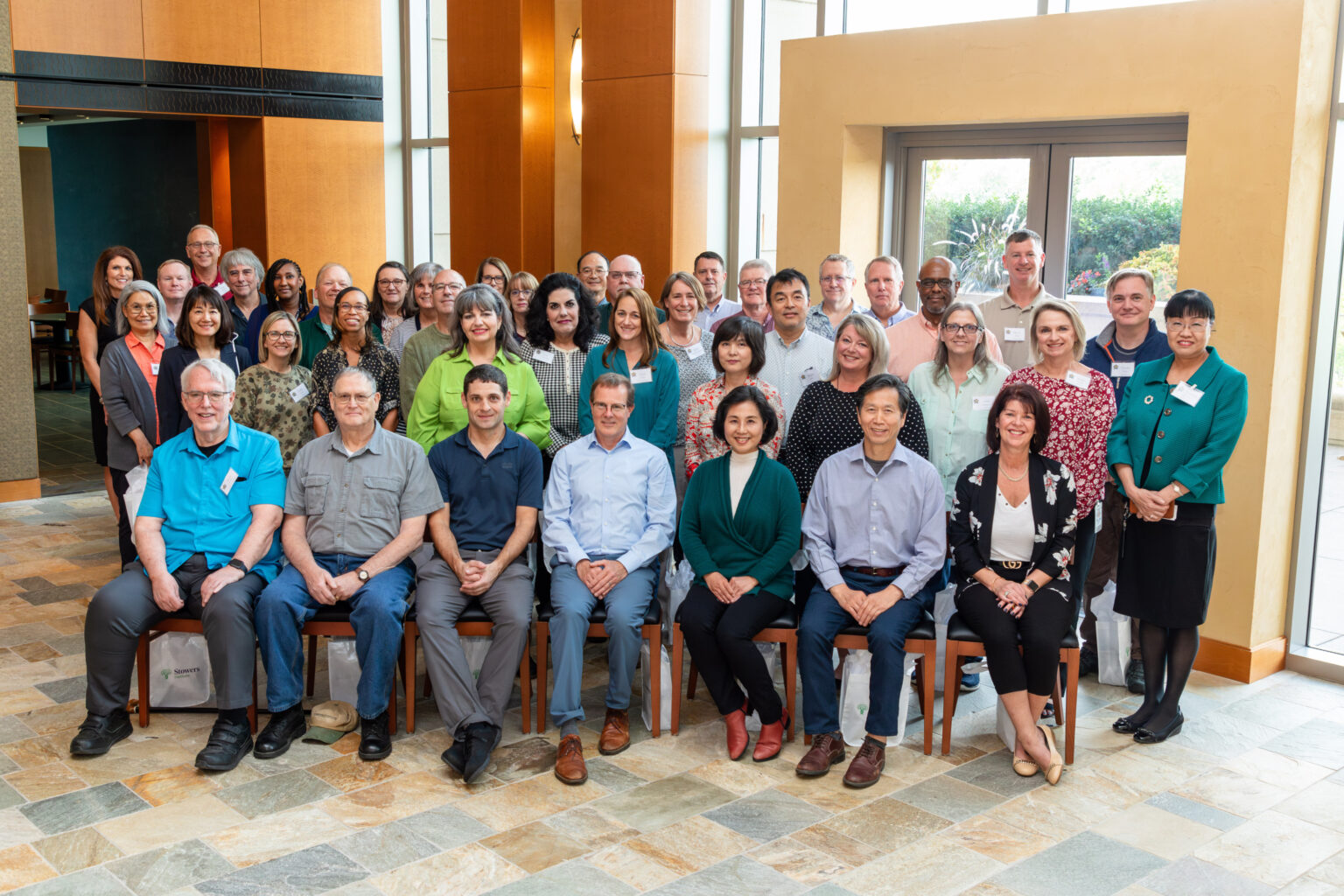News

24 June 2024
Stowers Faculty EDGE Workshop prepares postdocs for the academic job market
The Faculty EDGE series is just one of many advantages of the postdoctoral training program at the Stowers Institute.
Read Article
News
Join us as we review scientific discoveries of 2022, ranging from the human genome to planarian flatworms, from regeneration to metabolism

The Stowers Institute for Medical Research has had a science-packed year of discovery, innovation, and collaboration. Browse through 11 of our achievements and the accompanying images and videos.

Two decades ago, the world celebrated the completion of the human genome; however, little beknown outside the genomics community was that roughly eight percent was missing. In March, the Telomere-to-Telomere (T2T) consortium, a multi-institutional, international effort that included Investigator Jennifer Gerton, Ph.D., and other researchers at the Institute solved for and published the remaining mysterious sequences of the human genome.
Cavefish, Astyanax mexicanus, from Pachón
Over the course of our evolutionary history, humans have adapted to periods of feast or famine. Yet, in our current environment, feast has largely replaced famine, leading to escalating levels of metabolic conditions including diabetes, heart disease and stroke. Research published this year from the lab of Nicolas Rohner, Ph.D., focused on metabolism and how evolution drives genetic adaptations that enable survival that may be applicable for improving human health.

The stinging starlet sea anemone, Nematostella vectensis.
Jellyfish and their sea anemone and coral cousins possess stinging organelles called nematocysts. Highly complex in structure and function, these stingers have been the subject of study for over a century. In June, research from the lab of Matt Gibson, Ph.D., unveiled a precise model for the architecture and stinging mechanism of the starlet sea anemone. Potential applications of this discovery include the possibility of designing therapeutic drug delivery devices at microscopic scales.
Is there a connection between the immunesystem and regeneration? New research from Nicolas Denans, Piotrowski Lab, published in Nature Communications, found that macrophages are required for organ regeneration in a regenerating species. Listen as Investigator Tatjana Piotrowski and Postdoctoral Researcher Nicholas Denans explain their findings in-depth. Video courtesy of the Piotrowski Lab.
Why can some species readily regenerate organs, limbs, or even heads while others, like humans, cannot? In September, research from the lab of Tatjana Piotrowski, Ph.D., uncovered that a population of macrophages—a type of white blood cell—undergo a three-step, sequential change in phase and function to enable sensory cell organ regeneration in zebrafish.
New research from the Zanders Lab, published in eLife, has uncovered a selfish gene family that has survived for over 100 million years – casting new doubt on established beliefs on how natural selection and evolution tackle these threatening sequences.
Selfish genes bias their own transmission oftentimes at the expense of their host’s fitness and fertility. Research from the labs of SaraH Zanders, Ph.D., and Li-Lin Du, Ph.D., discovered a killer meiotic gene family in yeast that has survived 10 times longer than thought possible, raising questions on natural selection’s limitations.
The unusual pattern of ciliation on the planarians likely accounts for their unique, “inchworming” form of locomotion.
Alejandro Sánchez Alvarado, Ph.D., led a group of Clubes de Ciencia students in Guanajuato, Mexico, on a nature walk in 2016 where they discovered a never-before-seen strain of planaria. While researchers found evidence of rudimentary sex organs, they did not observe sexual reproduction, a requirement for traditional classification of new planaria species. However, the research published in June identified several unique flatworm features including an unusual method of locomotion and a resistance to radiation, potentially applicable to treatment-resistant cancer patients.

Fluorescent microscopy image of a mouse embryo. Red staining indicates peripheral neurons and nerves derived from neural crest cells.
Congenital craniofacial defects arise from disruptions early in the development of cells responsible for forming cartilage, tissue, and bone of the head and face. Several papers published this year from the lab of Investigator Paul Trainor, Ph.D., investigated the genetic mutations that result in severe craniofacial conditions like Treacher-Collins Syndrome (TCS). In July, research resulted in a comprehensive understanding of the pathways involved in TCS and related conditions.

Fluorescent microscopy illustrates proper protein self-assembly (left) compared to the assembly disruption from a mutated protein (right) in yeast cells.
A small stimulus can produce a large, irreversible change in immune system cells, akin to the flicking of a light switch from off to on, or the striking of a match. However, this fluctuation comes with a hefty energy price tag. So, how then does order arise from disorder? In June, research from the lab of Randal Halfmann, Ph.D., resolved the biophysical nature of an immune system response.

In 1999, Alejandro Sánchez Alvarado, Ph.D., received a package from Sardinia containing hermaphroditic flatworms, the sexual strain of Schmidtea mediterranea. Twenty-three years later, a collaboration in June between the Stowers Institute and the University of California, Los Angeles resulted in novel insights into planarian genetics, the assembly of linkage maps for every gene in the planarian genome, and new evidence supporting the theory of sex chromosome evolution.

Zebrafish possess regenerative capacities that mammals do not. Sensory organs (neuromasts) are dotted along the zebrafish lateral line.
In humans, damage or death of the delicate hair cells in the inner ear is irreversible, resulting in permanent hearing loss and even deafness. Zebrafish have sensory hair cells remarkably similar to those of humans, yet, they can fully regenerate following cell death. In April, research from the lab of Investigator Tatjana Piotrowski, Ph.D., uncovered a new regeneration mechanism.
Humans have approximately 22,000 genes that encode all proteins, estimated to be between three to 300 times greater in number. So, how do humans attain protein complexity without a corresponding number of genes? Two studies published in March from the lab of Investigator Jerry Workman, Ph.D., revealed a key link involved in two biological processes responsible, providing insight into disease.
News

24 June 2024
The Faculty EDGE series is just one of many advantages of the postdoctoral training program at the Stowers Institute.
Read Article
News

17 January 2024
Q&A with Stowers Postdoc Michael Church: “When I got the opportunity to join the Workman Lab, I jumped at the chance.”
Read Article
News

06 October 2023
Forty-nine members reached 20 years of service at the Stowers Institute. The Institute founders, Jim and Virginia Stowers, envisioned establishing the Institute as a long-term investment for advancing foundational knowledge in biology for the benefit of all.
Read Article